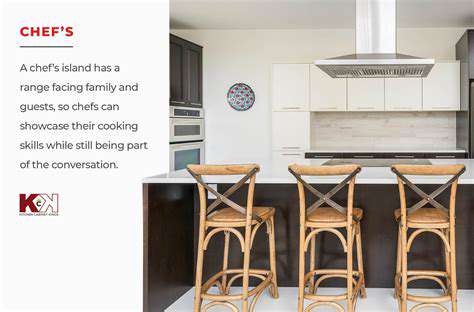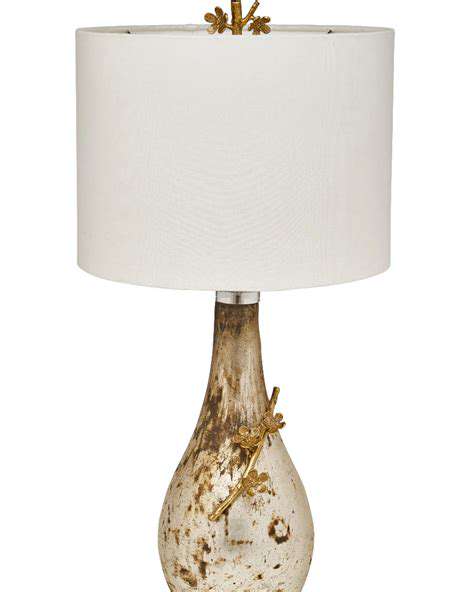Kitchen Island Design Ideas: Functionality and Aesthetics
Island Size Considerations
When designing a kitchen island, the size is crucial for functionality and aesthetics. A small island, perhaps 4 feet by 2 feet, might be perfect for a galley kitchen, providing a prep space and a small seating area. However, this size might prove insufficient for a large family or a kitchen with demanding culinary needs. Consider the frequency and type of activities that will occur on the island – prepping meals, cooking, or simply gathering with family. A larger island, maybe 6 feet by 4 feet, can accommodate multiple cooks, extensive food preparation, and more substantial seating, making it ideal for a large family or for entertaining.
A key factor in determining island size is the available space. Measure the area you have available for the island, including the distance from walls and other cabinetry, to ensure a comfortable and practical layout. Don't forget to account for the necessary circulation space around the island for easy movement and to avoid feeling cramped in the kitchen. A well-sized island promotes a smooth workflow and enhances the overall usability of the kitchen space.
Island Shape Options
Island shape significantly impacts the feel and functionality of your kitchen. A rectangular island is a classic choice, offering a simple and versatile design that can easily accommodate various appliances and storage solutions. It's straightforward to integrate into most kitchen layouts and provides a clear, defined work zone. Square islands are another popular option, offering equal proportions on all sides. This symmetry can create a sense of balance and order in the kitchen.
Beyond the standard shapes, consider other options like L-shaped or U-shaped islands. These shapes are ideal for kitchens with more space and allow for more complex arrangements of storage, seating, and appliance placement. They create a more substantial work area and can be designed with multiple work zones, making them suitable for larger families or those who spend significant time in the kitchen.
Circular or oval islands can introduce a touch of elegance and modernity to a kitchen. They often provide a more intimate and inviting atmosphere, perfect for smaller kitchens where a more free-flowing layout is desired. However, they can also be less practical for large-scale food preparation. The shape you choose should align with the overall style and functionality you want to achieve in your kitchen.
Island Placement Strategies
Strategic placement of the island is key to maximizing its functionality. Consider the position of existing appliances, cabinetry, and the flow of traffic within the kitchen. Placing the island near the stove allows for seamless meal preparation, while positioning it near the sink facilitates cleanup. Think of the island as a central hub, connecting the cooking, prepping, and cleaning areas. This thoughtful placement improves workflow and efficiency, reducing the need for excessive movement within the kitchen.
The relationship between the island and other kitchen elements is vital. Ensure sufficient space between the island and cabinets or appliances to allow for easy access and movement. Clear sightlines and ample space for circulation are essential for creating a welcoming and functional kitchen space. Careful consideration of these factors will create a kitchen that is both visually appealing and highly practical for daily use.
Island Design and Materials
Selecting the right materials and design for your island is crucial for both aesthetics and durability. Consider the materials available, such as granite, quartz, wood, or stainless steel. Granite offers a classic look and durability, while quartz is known for its low maintenance and wide range of colors and patterns. Wood can create a warm and inviting atmosphere. Choose materials that complement the overall style of your kitchen and withstand daily use. The choice of countertop material should be carefully considered, as it will be subject to high levels of wear and tear.
The design of the island, including the countertop, cabinets, and seating, should be consistent with the overall aesthetic of your kitchen. A modern kitchen might benefit from a clean-lined island with sleek countertops, while a traditional kitchen might feature a more elaborate design with intricate details. Consider the style and design of the rest of your kitchen to maintain a cohesive and visually appealing space.
Island Materials: Choosing the Right Look and Durability

Island Material Selection: Understanding Your Needs
Choosing the right materials for your island project is crucial for both the aesthetic appeal and the structural integrity of the final product. Careful consideration of factors like the island's intended use, the surrounding décor, and the overall design scheme will help guide your selection process. A thorough understanding of the available options is vital for making informed decisions, ensuring your island not only looks great but also lasts for years to come.
Different materials offer unique advantages and disadvantages. For example, granite countertops are known for their durability and luxurious appearance, but they come with a higher price tag. Wood islands, on the other hand, can add a warm and inviting feel to a kitchen, but require more maintenance to prevent damage and deterioration over time.
Durability and Longevity in Island Construction
The durability of the materials you choose will significantly impact the longevity of your island. Materials like stainless steel are known for their strength and resistance to dents and scratches, making them ideal for high-traffic areas. Consider the frequency of use when selecting materials; a kitchen island used daily for meal preparation will require more robust materials than one used less frequently.
Factors such as weather conditions, if the island is outdoors, and expected wear and tear also play a role in the selection. It's essential to choose materials that can withstand the specific conditions of your environment. Proper maintenance, regardless of the material, is also key to ensuring the island maintains its quality and aesthetic value for years to come.
Aesthetics and Design Considerations
The aesthetic appeal of your island is a significant aspect of the overall kitchen design. Matching the existing color palette and style of your kitchen is important to create a harmonious and cohesive look. Consider the overall design theme when selecting materials, ensuring they enhance, rather than detract from, the ambiance.
Exploring different textures and finishes can add depth and visual interest to your island. The choice between smooth surfaces and more textured materials can greatly impact the overall feel of the space. The interplay between materials and lighting can also highlight specific features and create a captivating visual experience.
Budget and Practicality in Material Selection
Budget constraints often play a crucial role in the material selection process. Understanding the price range of various materials is essential for creating a realistic budget. Comparing prices and researching different options can help you find the best value for your money without compromising quality. It's important to find a balance between cost-effectiveness and the desired quality and functionality of the island.
Consider the ease of cleaning and maintenance when selecting materials. Some materials are more prone to stains or require specific cleaning techniques, which can influence your decision. Choosing materials that are easy to maintain will save you time and effort in the long run, allowing you to focus on other aspects of your kitchen design.
Integrating Appliances: Streamlining Workflow and Efficiency
Appliance Placement for Optimal Flow
Strategic placement of appliances is crucial for a smooth workflow in your kitchen island design. Consider the natural flow of your cooking process. For example, if you frequently transfer ingredients from the refrigerator to the countertop, position the refrigerator and countertop elements close to each other on the island to minimize steps and maximize efficiency. This thoughtful arrangement will dramatically reduce wasted time and effort during meal preparation.
Think about how each appliance will interact with others. Will the oven need easy access to the sink for transferring dishes? Will the dishwasher require space for loading and unloading? Planning these interactions in advance can prevent bottlenecks and create a more functional and enjoyable kitchen experience.
Choosing the Right Appliances for Your Needs
Not all appliances are created equal. When selecting appliances for your kitchen island, consider your cooking style and frequency. If you're a frequent baker, a built-in oven or a dedicated countertop oven on the island could be a game changer. If you entertain often, a large, high-capacity dishwasher might be necessary to handle the increased load. Don't forget about the smaller details, such as the power and capacity of the microwave, to ensure its functionality meets your expectations.
Integrating Built-in Appliances for a Seamless Look
Built-in appliances, especially those integrated into the island itself, can create a sleek and modern aesthetic. These appliances often offer a more polished appearance and can enhance the overall design of your kitchen. Matching the finishes and colors of the built-in appliances to your cabinetry and countertops helps achieve a cohesive look. However, the cost of built-in appliances is often higher, so careful consideration of your budget is essential.
Considering Space Constraints and Layout
The layout of your kitchen island will significantly impact how you integrate appliances. Measure the space available carefully before selecting appliances. Ensure that there's sufficient counter space around each appliance for safe and convenient use. Consider the overall size and shape of the island, as well as the dimensions of the appliances, to avoid overcrowding or insufficient workspace. A well-planned layout is key to maximizing the functionality of your kitchen island.
Utilizing Space-Saving Appliance Options
Smaller appliances can be incorporated into your kitchen island design without sacrificing functionality. Compact refrigerators, under-counter dishwashers, or smaller microwaves can be excellent options for maximizing island space. These options can be strategically placed to take advantage of unused corners or areas. Their compact design can save precious countertop space, making your kitchen more efficient and aesthetically pleasing.
Ensuring Accessibility and Ergonomics
The placement of appliances on your kitchen island should prioritize accessibility and ergonomics. Ensure that all appliances are within easy reach for the user, promoting a comfortable and efficient cooking experience. Consider the height and reach of different users in your household to make the island usable by everyone. Using adjustable shelving units or pull-out drawers can help maximize space and improve access to frequently used items.
Maintenance and Repair Considerations
When integrating appliances into your kitchen island design, think about the ease of maintenance and potential repairs. Select appliances that are relatively low-maintenance. Also, consider the location of the electrical outlets and plumbing connections to ensure easy and convenient maintenance and repairs. A well-maintained appliance will significantly enhance the long-term functionality and usability of your kitchen island. Choosing appliances that are readily available for service is crucial for minimizing downtime.

- Cooking for Special Diets: Allergies and Intolerances
- Whole30 Meal Planning: Simple and Compliant Recipes
- Storing Garlic in a Cool, Dry Place: Best Practices
- Storing Fresh Ginger Root: Preserve Potency
- Homemade Jams and Jellies: Preserve Summer Flavors
- Authentic Vietnamese Spring Roll Sauce: Nuoc Cham
- Cooking with Air Fryer Oven: Versatile Appliance
- Vegan Snack Ideas: Healthy and Satisfying
- Cooking with Countertop Oven: Small Kitchen Solution
- Exploring Scandinavian Cuisine: Gravlax and More
- Cooking with Waffle Maker: Sweet and Savory
- Low Calorie Dessert Recipes: Guilt Free Sweetness